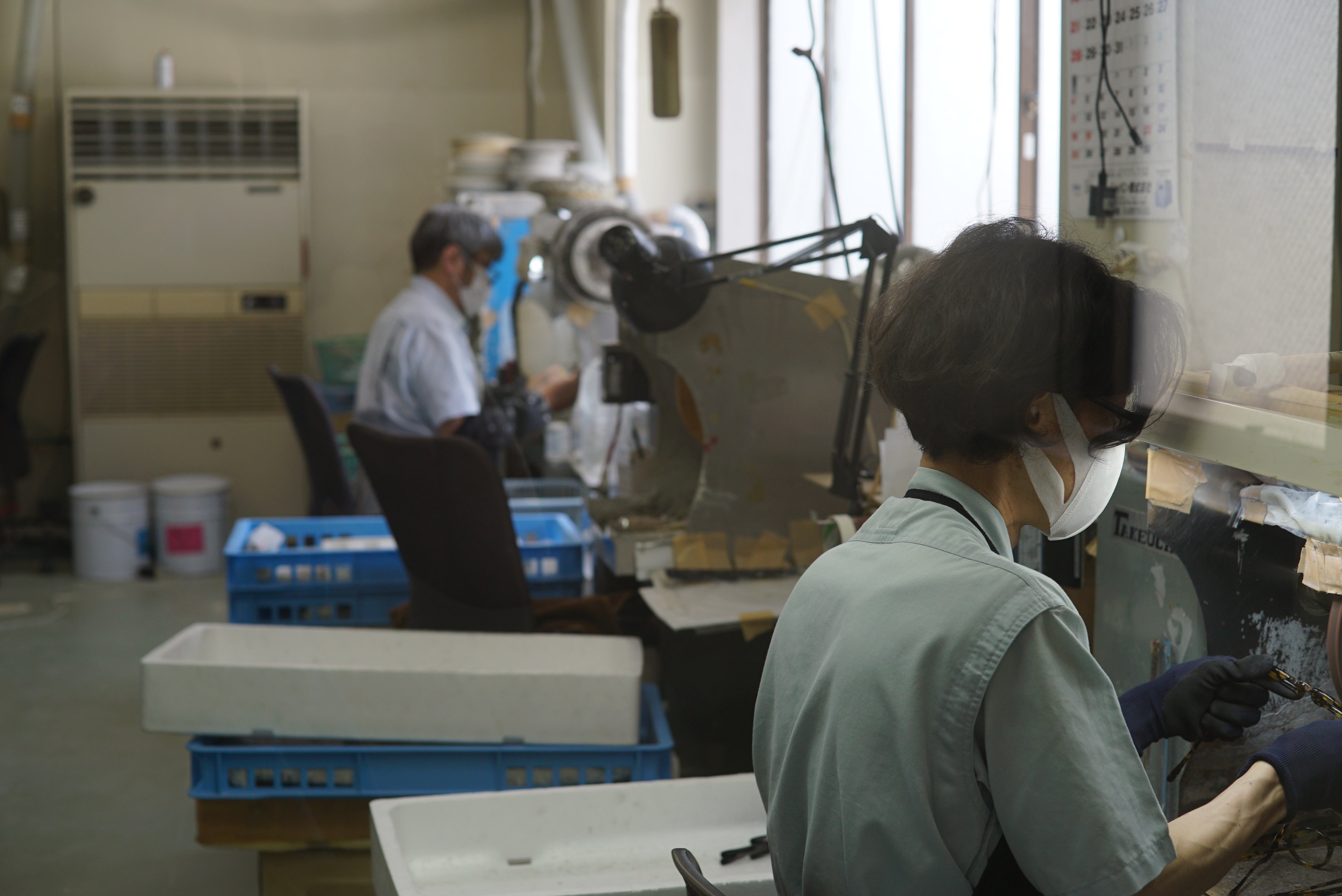
Today, we'll introduce you to this proud creation, 'MIGAKI.'
There are essentially two ways to create what is commonly referred to as "plastic eyewear." One method involves using resin, where melted plastic is poured into molds on a conveyor belt system for mass production. It's an affordable and efficient production method. In contrast, the eyewear produced in Sabae, Japan is meticulously crafted from sheets of material. Each piece, from the front frame to the temples, nose pads, and more, is cut, polished, and assembled by hand using hinges and other components. Sabae-made eyewear undergoes over 200 individual processes before a single pair is completed. While eyewear produced on conveyor belts might be considered "industrial," Sabae-made eyewear is more appropriately described as "artisanal."
Sasaki Celluloid primarily uses acetate and celluloid as materials for their eyewear, with acetate accounting for about 95% of the factory's production, while celluloid makes up approximately 5%. Over the course of about six months, they transform these materials from sheets into a finished pair of glasses. During this six-month period, the majority of the time is dedicated to the "MIGAKI" process.
Let's delve a bit deeper into the polishing process. Polishing can be broadly divided into two stages: "Garan polishing" and "buff polishing." The former involves running machines for tens of hours to smooth out the edges of the eyewear. This process gives the glasses a natural curvature and makes them more resistant to scratches. Interestingly, there are different types of barrel polishing, including "rough barrel," "intermediate barrel," and "finishing barrel," each requiring approximately 20 hours of work. Different types of bamboo chips and abrasives are used for each type of barrek, and adjusting the quantity of these materials is also a job for the artisans. With meticulous adjustments and precision work, the artisans operate the machines, making this step a testament to their years of experience.


The process that occurs during barrel polishing is known as buff polishing. Buff polishing also consists of three stages: "rough buff," "intermediate buff," and "finishing buff," all of which are done entirely by the hands of skilled artisans. Depending on whether it's rough, intermediate, or finishing buff, different types of buffs and abrasives are used for polishing. In fact, among the manual processes at Sasaki Celluloid, this buffing stage accounts for a staggering 80% of the total labor time.

When you hear 'polishing,' it might give the impression of a one-time process, but in reality, it involves no less than six stages and utilizes the most hands and time of all the craftsmanship.
Sasaki Celluloid Industrial's house brands, 'SASAKI' and 'sasaki celluloid,' are no exception. Artisans put their heart and soul into the polishing process. We invite everyone to pick up and put on these eyewear pieces to experience the exquisite smoothness of their surfaces.
Now, next week marks the eagerly awaited eyewear celebration, Silmo 2023, in Paris, France! It's the first time for Sasaki Celluloid Industrial to participate. Stay tuned for on-site reports!
